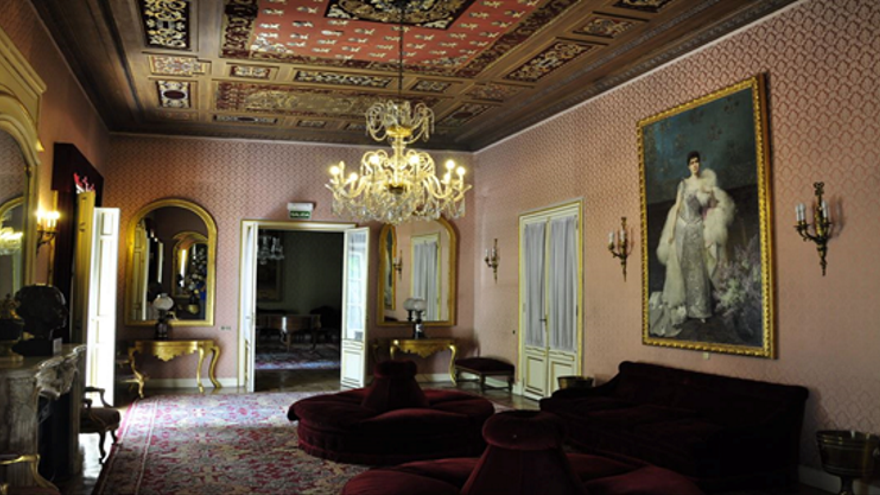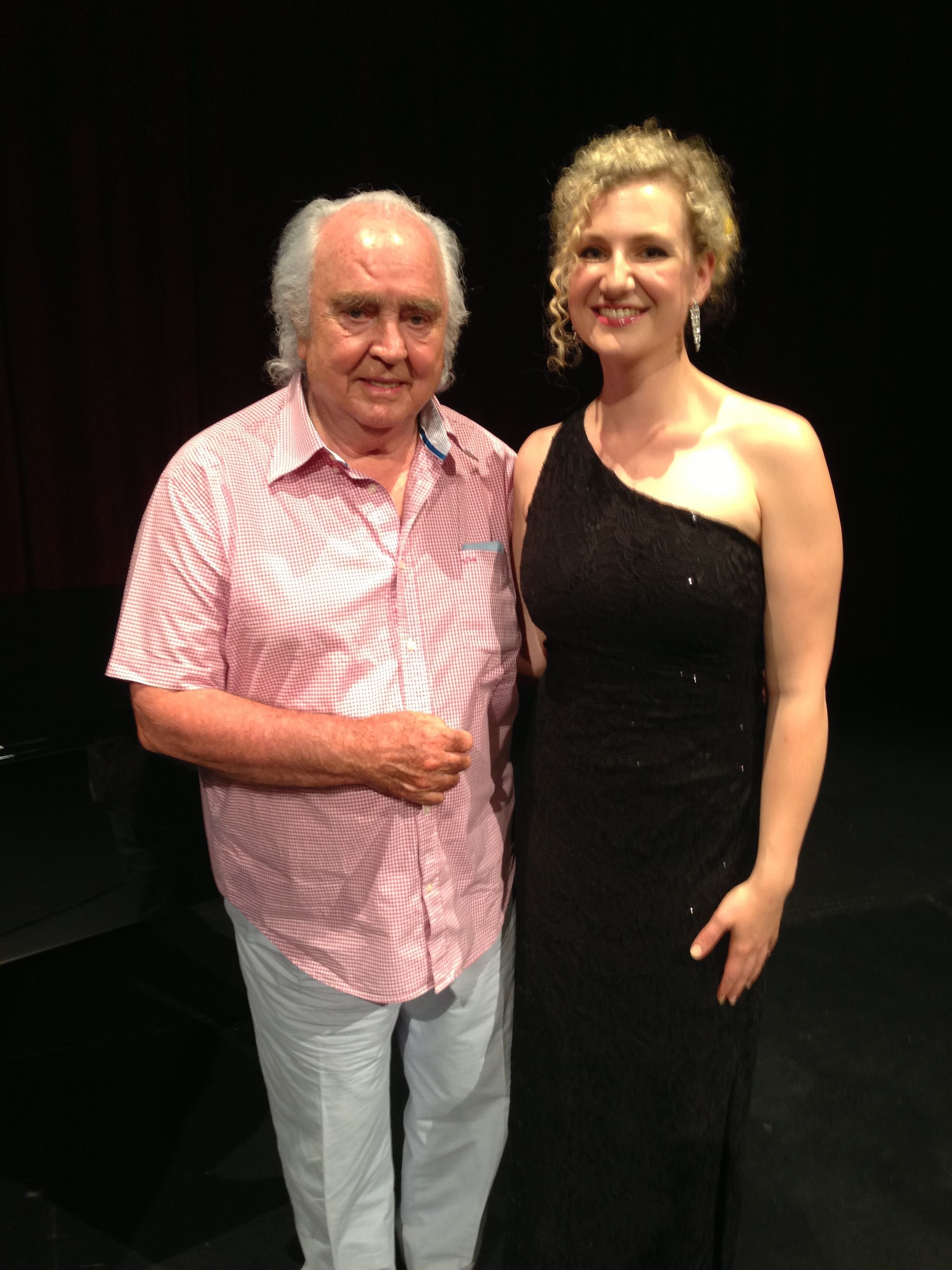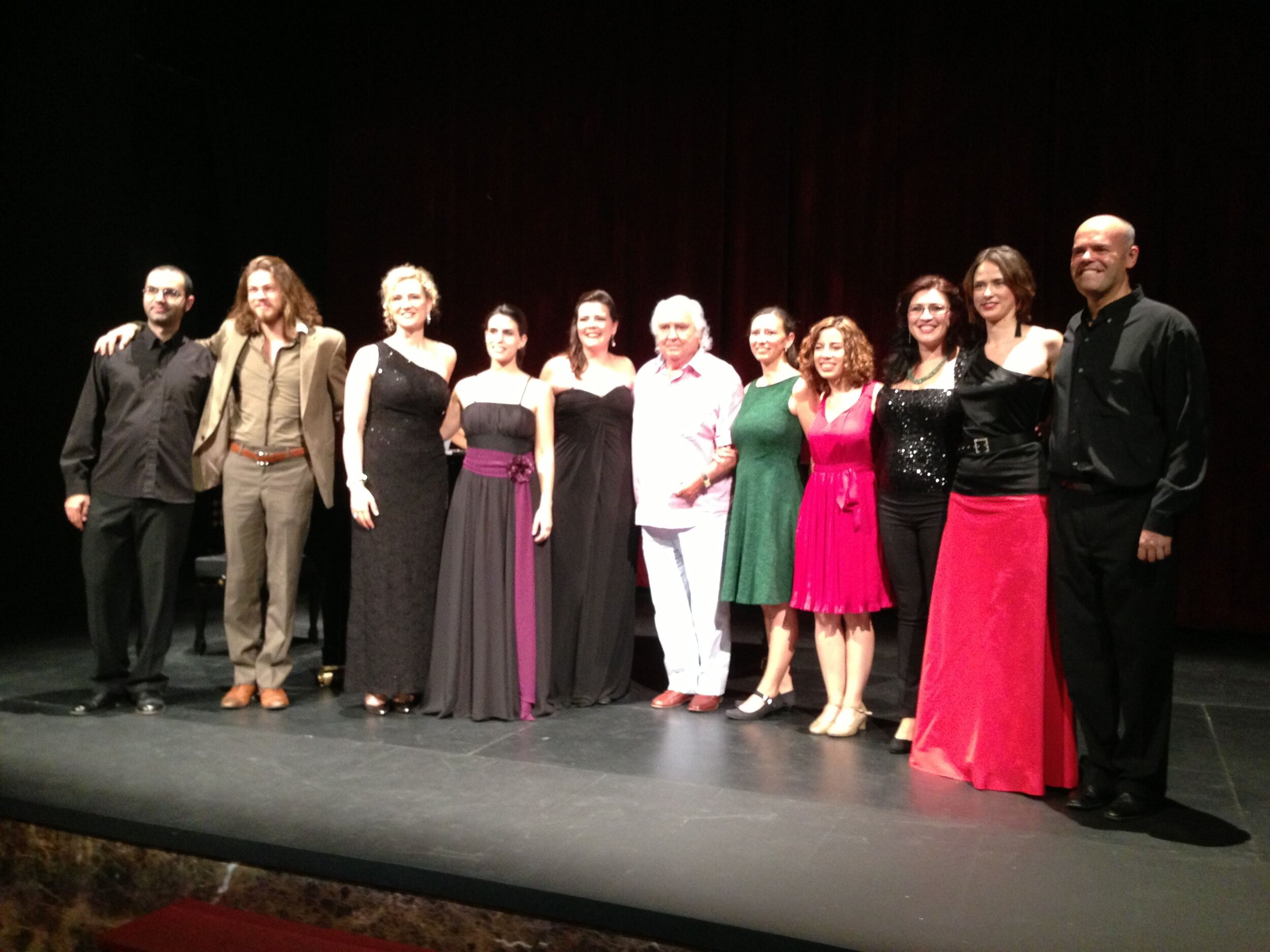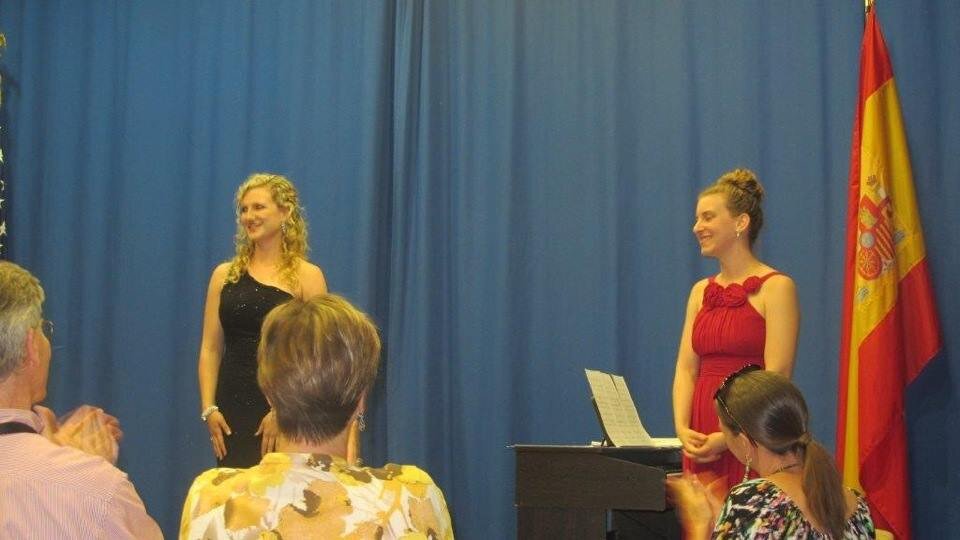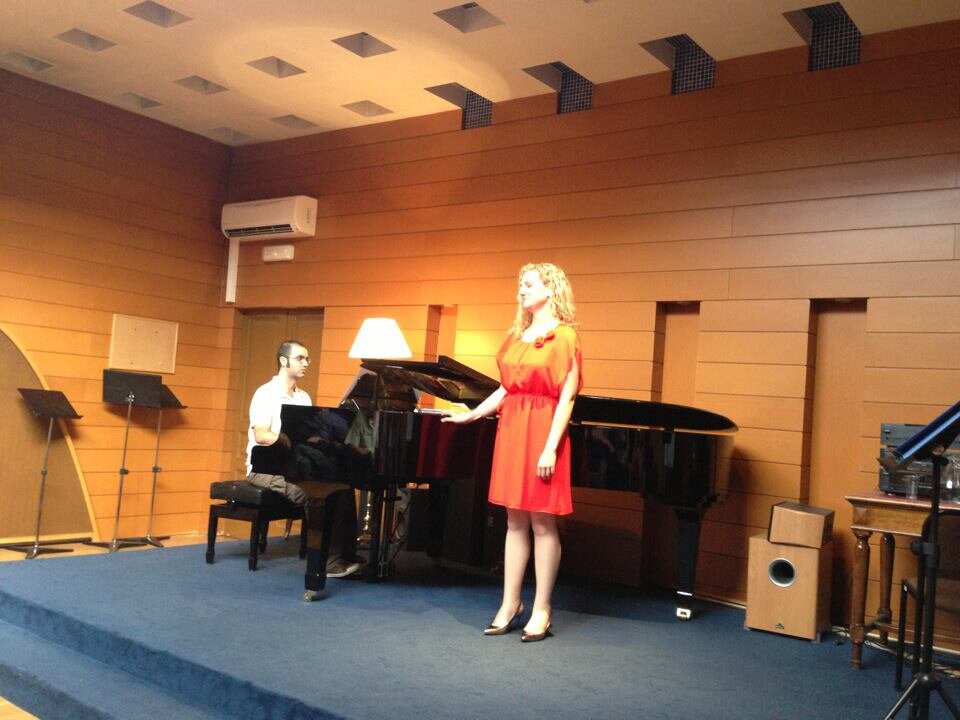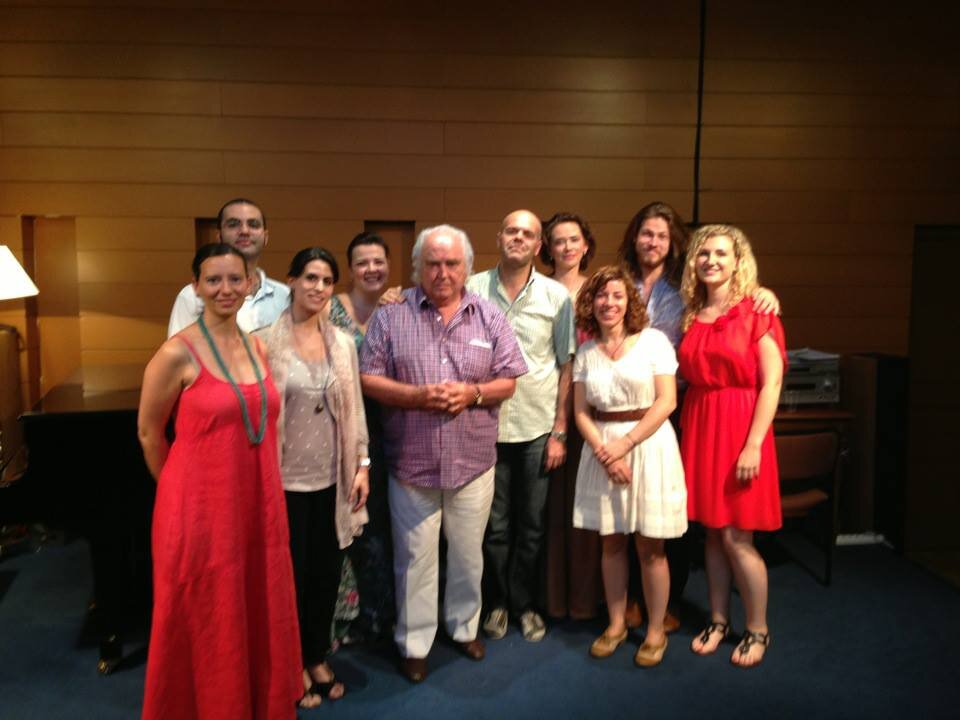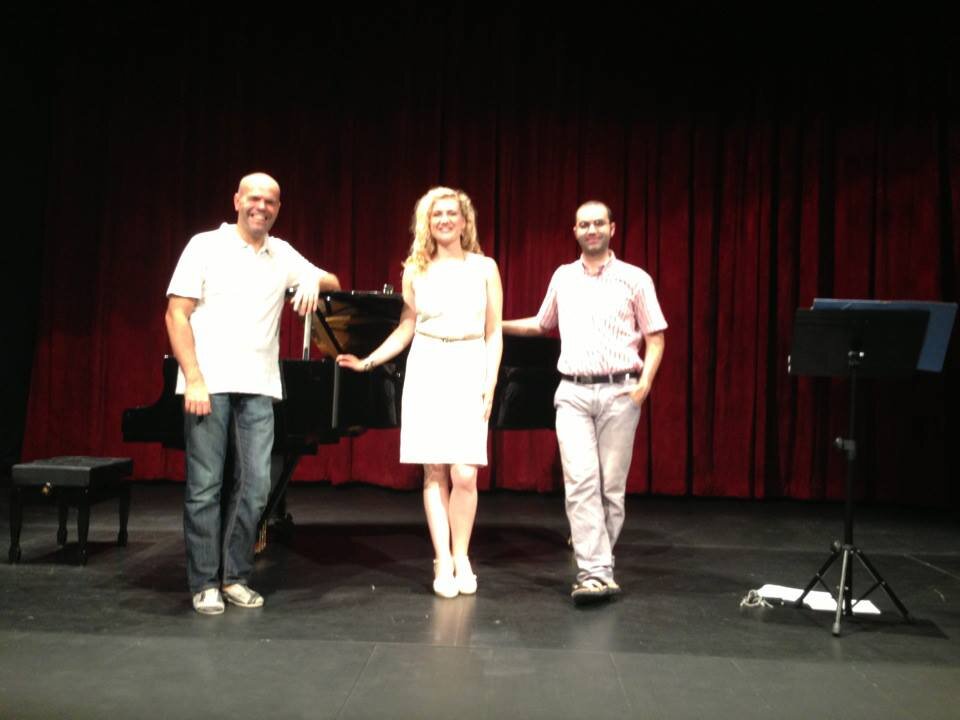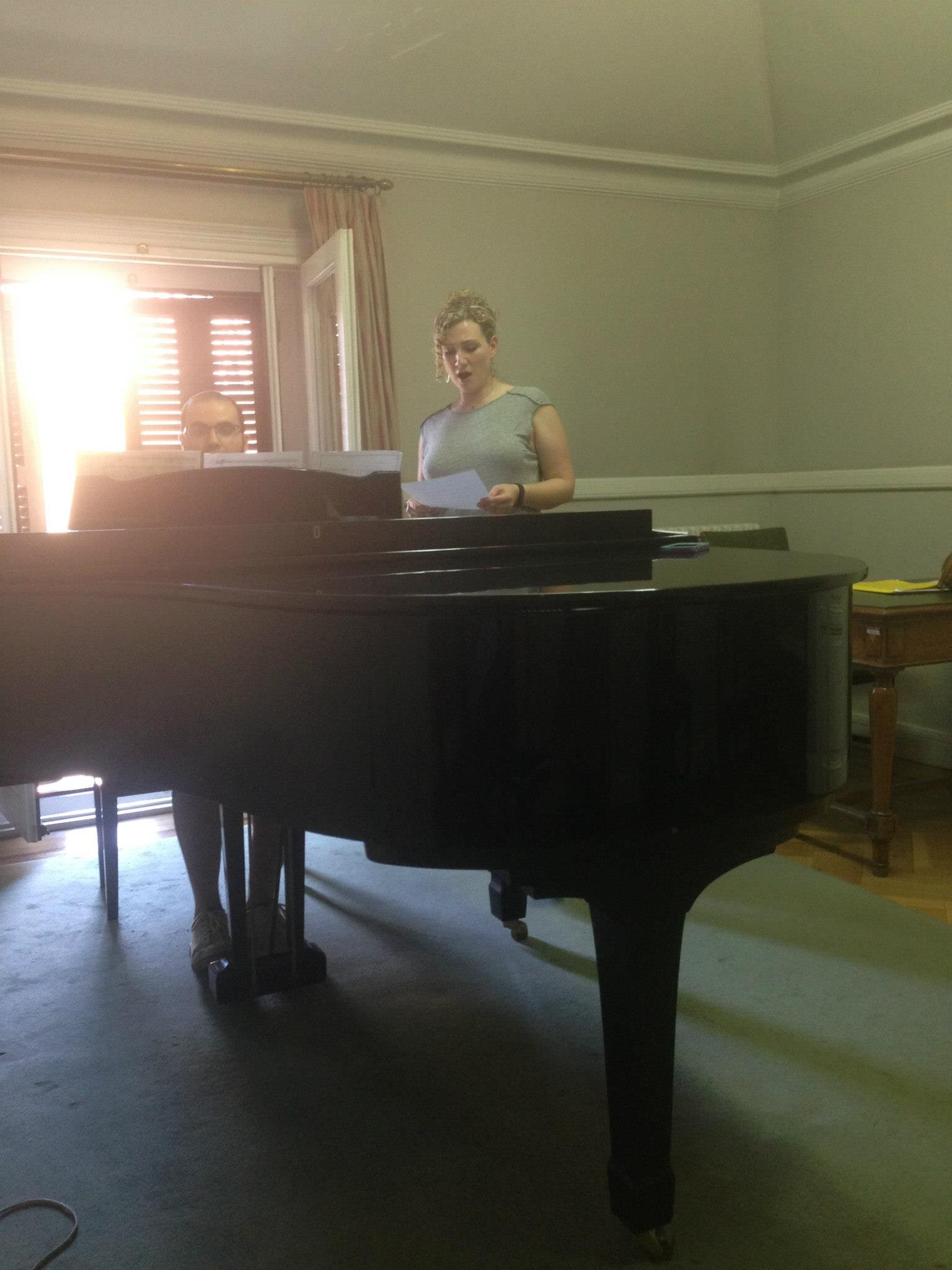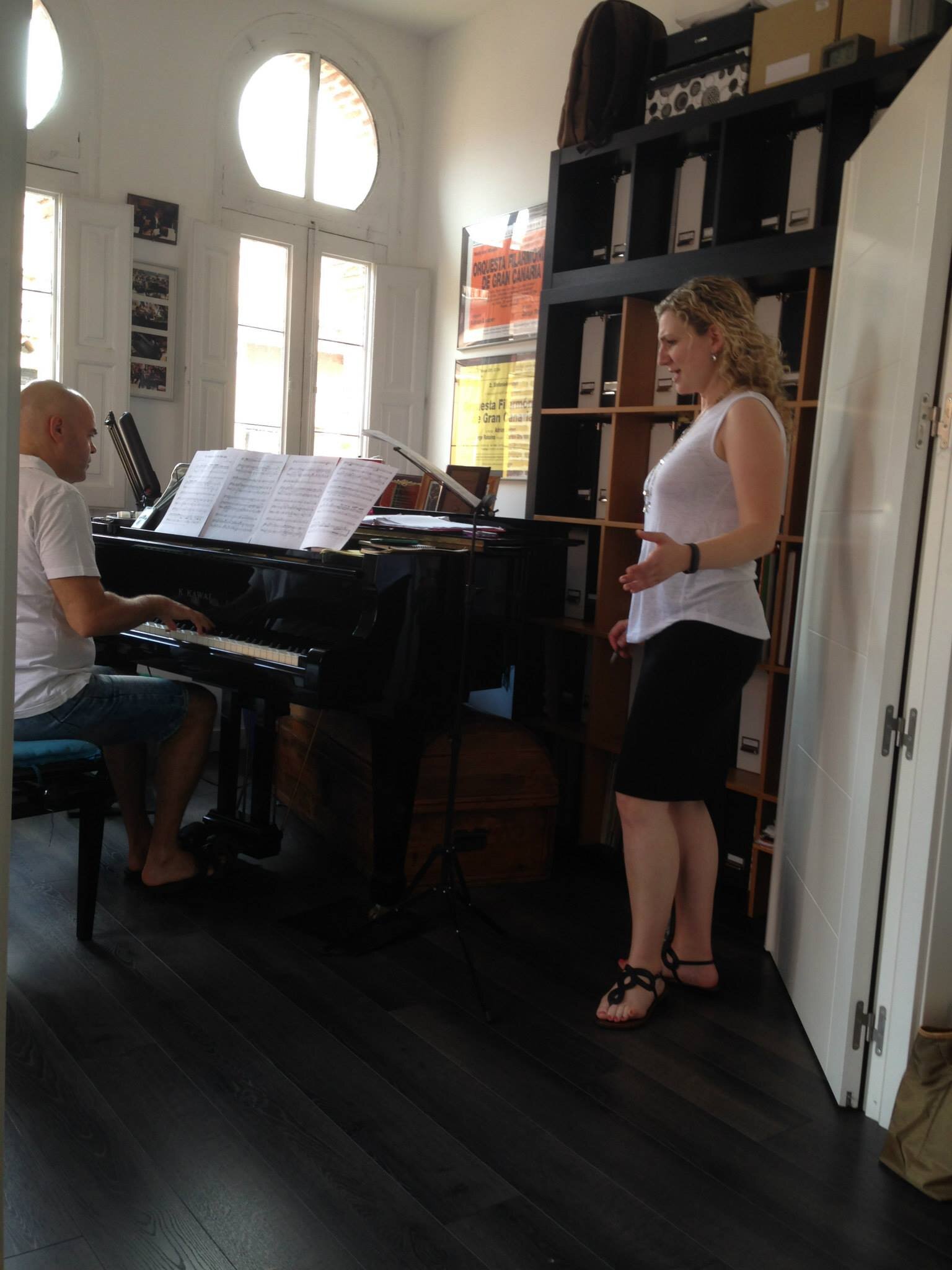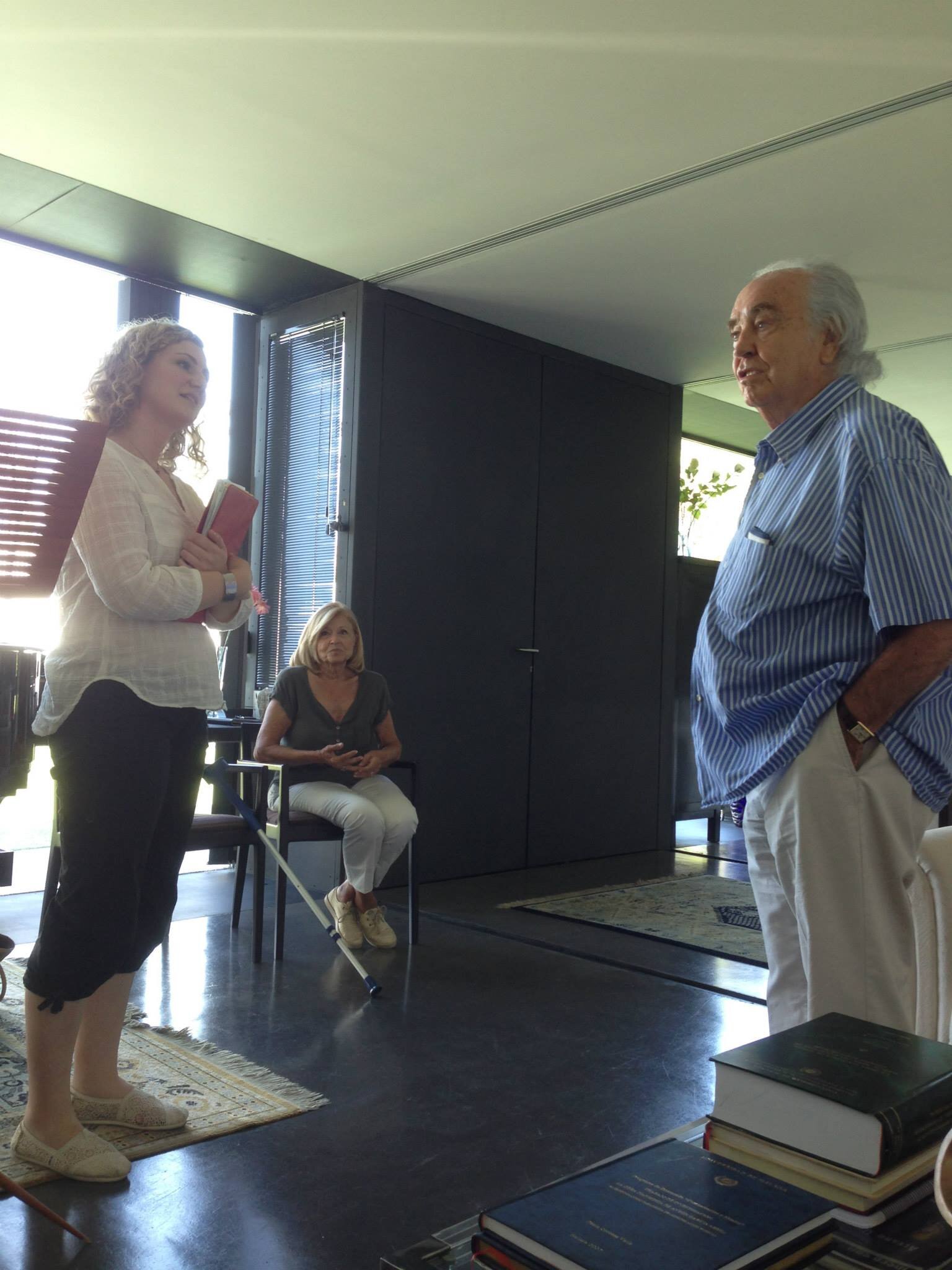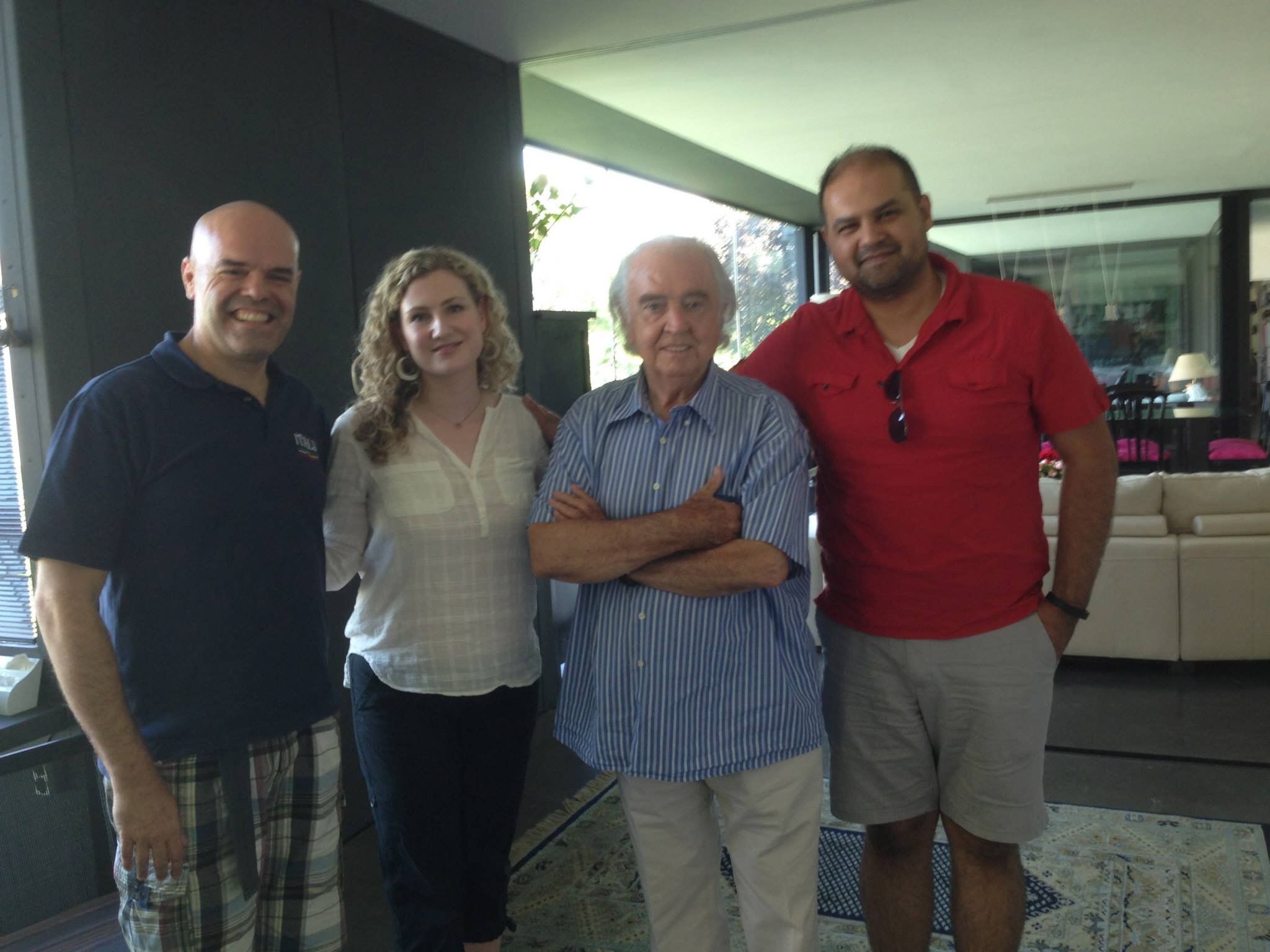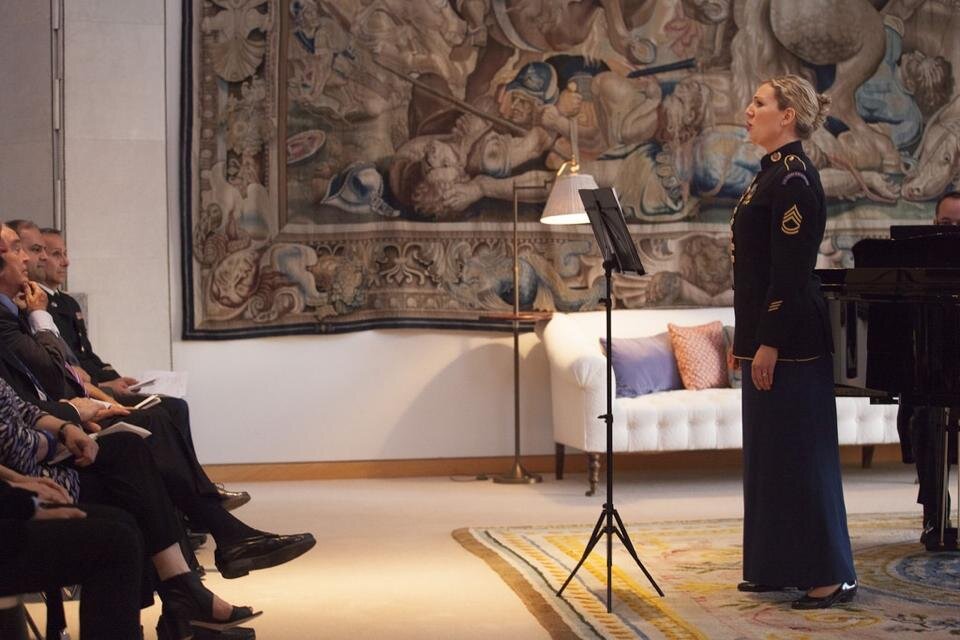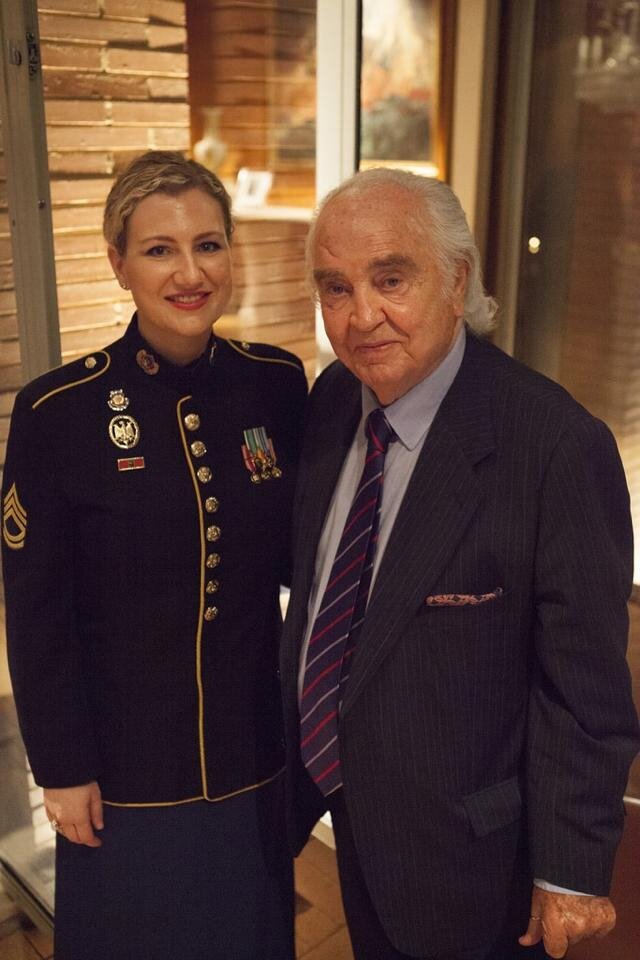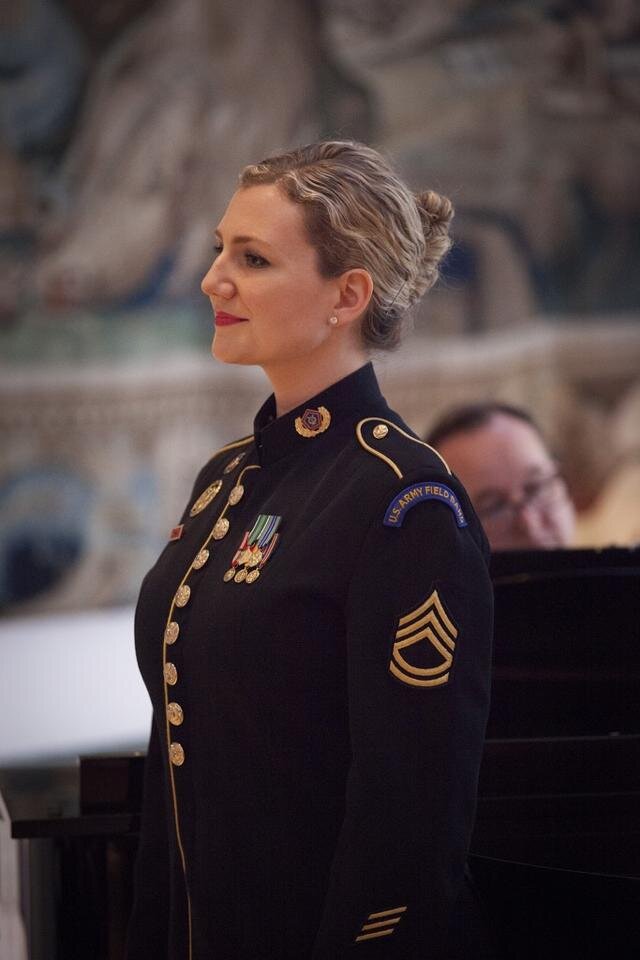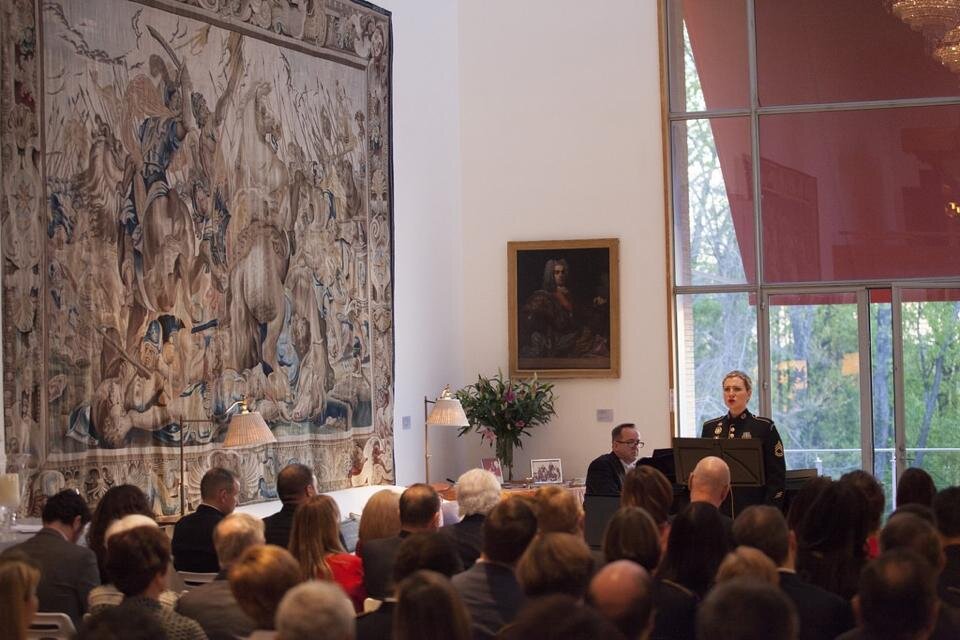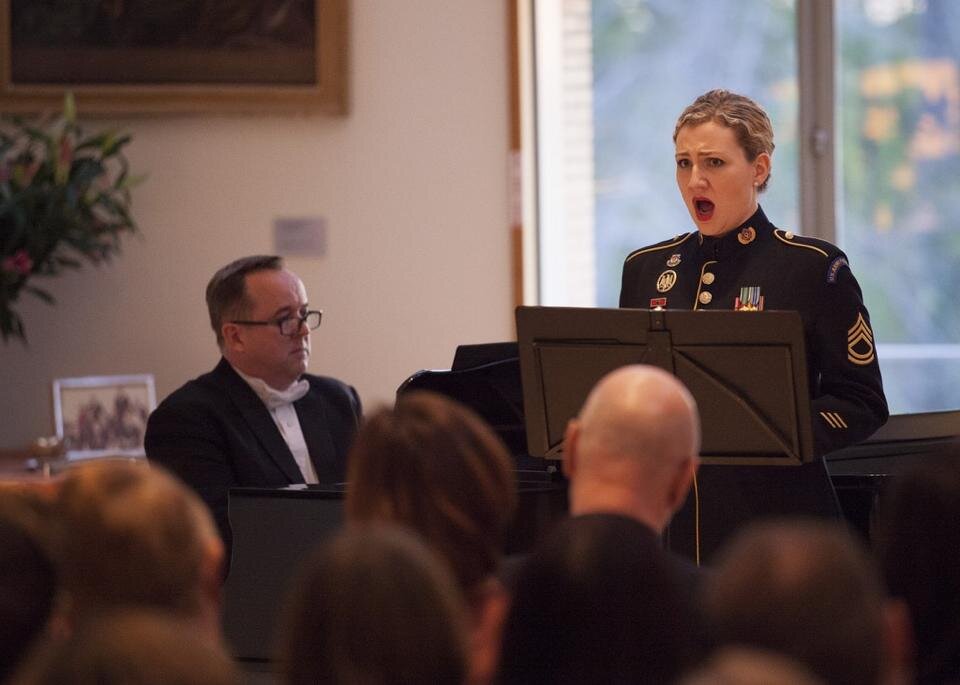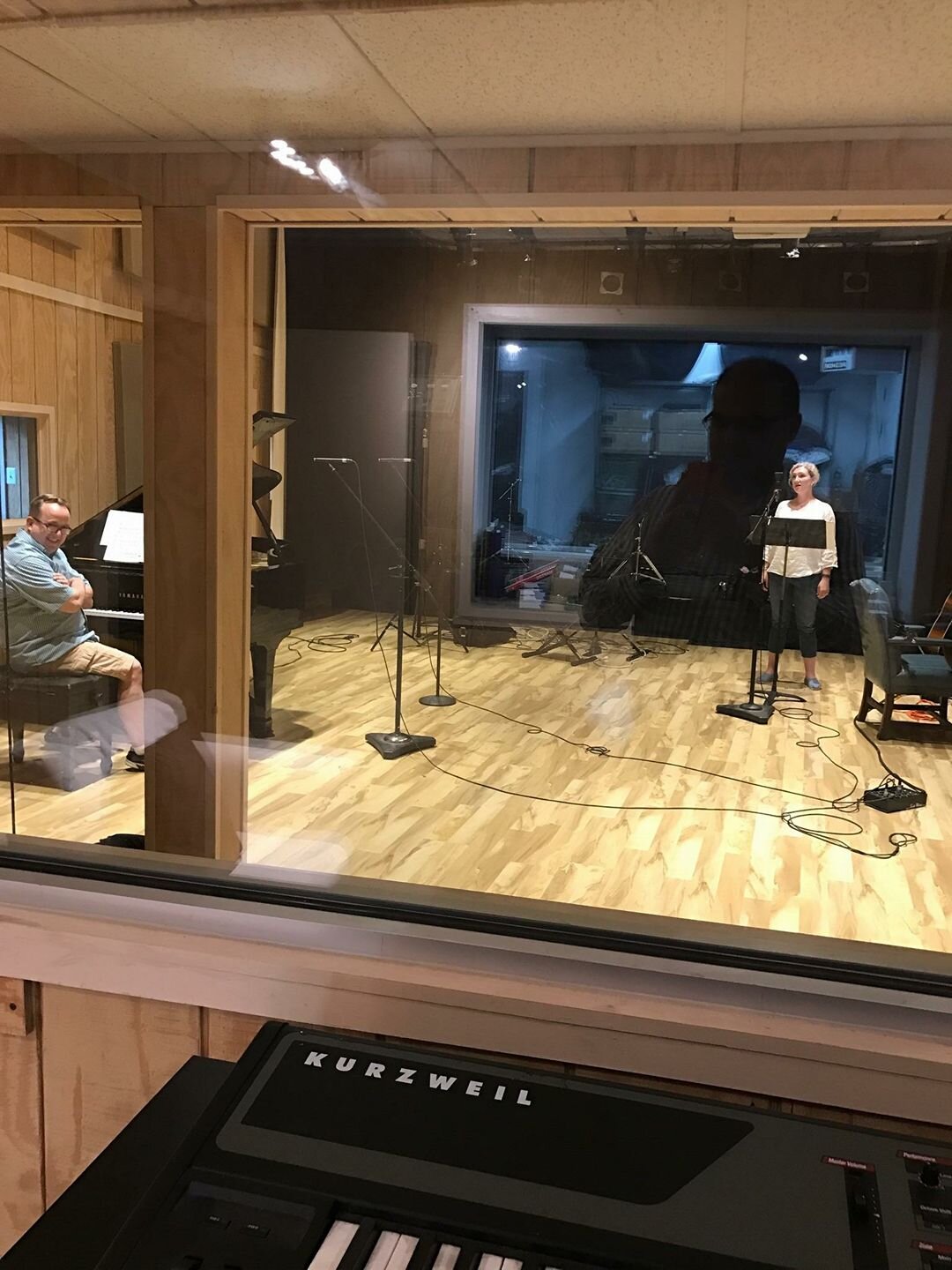"Canciones de Antón García Abril": The story behind the album
Spain: Connecting to my roots
My great-grandmother was Spanish, and my grandmother was born in Madrid; my middle name, Pilar, is inherited from my great-grandmother. I grew up hearing both my grandmother and mother speaking Spanish fluently. As a professional singer and music major in college, I had spent many years studying Italian art songs and opera, German Lieder, and French chansons, and spent time in each of these countries to soak in the culture and absorb the music. However, I never studied more than a handful of Spanish art songs, “canciones,’ during college at the Eastman School of Music and George Mason University. Often, Spanish art songs are neglected at the university level in music schools and conservatories in the United States. When a friend had recommended a summer Spanish art song program, I was immediately intrigued. I was excited to go in order to connect to my roots, and learn more about Spanish art songs in an immersive environment. The program, led by Nan Maro-Babakhanian, was called Project Canción Española. The program was for a wonderful group of singers with many nationalities represented, including vocalists from Spain, the U.S., Japan, and other European countries. I am so glad and grateful I took that step, because that summer I fell in love with Spain and its music.
The beautiful gem of a Baroque-style Teatro at the Escuela Supérior de Canto
On the first day, Nan warmly welcomed all of us in the lobby of the beautiful and grand Escuela Supérior de Canto, formerly the Bauer Palace. She also gave each of us a gift: a box CD set recorded by various Spanish artists, all singing the music of Antón García Abril. I was already studying one of Maestro Abril’s pieces from the Siete Canciones de Amor as part of the program, and learned that we would be able to meet him and his wife, Aurea, later that week. I had never heard his music performed before, and was excited to meet a living composer, and get his feedback on my interpretation of “La luna carecía de luz propia.” I also met the incredible pianist and faculty member at the ESCM, Jorge Robaina, and learned that I would be coaching with him on this piece. Jorge immediately put me at ease by helping to explain the poetry of the song, which was complex to grasp as a non-native Spanish speaker. He also challenged me to sing the music exactly as it was written, not compromising on any detail. His flawless and thrilling playing inspired me to work hard, and stay positive throughout the learning process. I recorded every coaching and masterclass, listening to them at night afterwards, trying to quickly learn and solidify what I absorbed from Jorge and from watching my colleagues during masterclasses as well.
Meanwhile, I was a tourist in Spain for the first time, and in addition to going to the Museo del Prado and the Museo Reina Sofia, I went to my grandmother’s former apartment near the expansive and regal Retiro Park. It was important to me to picture where she had lived before her family’s apartment was taken over by guerrillas in the 1930s. I went to see flamenco tablaos at night, amazed by the energy and intensity of performances I saw. I went to Seville and Valencia as well, getting a sample of life in Andalusia and the Mediterranean, so often referred to in the poetry of Federico Garcia Lorca and the music of Spanish composers Manuel De Falla, Albéniz, and Granados, among countless others.
Meeting Maestro Abril for the first time
After three days of vocal coaching, beginning flamenco classes each morning, Spanish diction lessons, and watching other singers in their coachings, the day arrived for Maestro Abril’s masterclass. I was nervous to meet a living composer of this beautiful and unique music I was learning for the first time. However, I was put at ease right away by Maestro Abril and his lovely wife, Aurea. They were warm and smiling, energetic and relaxed. It was obvious to everyone that they were special: a distinguished couple completely in love, who were down-to-earth, and devoted to young musicians. I immediately felt supported by the Abrils, and challenged to do my best. The masterclass went well; Maestro Abril focused on the rhythm of the song (he often has polyrhythms and multiple meter changes to fit the contour of the text). Overall, he was a great presence in the room, and made everyone felt a positive connection to the music. I began to realize the experience of meeting the Abrils would change my life for the better.
Returning to Spain in 2013
After the final concert, it was announced that the following year Maestro Abril would be giving a week-long masterclass. I hoped I would be able to attend, as my heavy touring schedule with the U.S. Army Field Band could possibly conflict with the dates. I left having made connections with so many wonderful singers and musicians and decided that regardless, I would be going back to Spain in 2013.
In the meantime, I was brainstorming on my journey back to the States as to how I would continue singing Abril’s music, studying Spanish canciones, and sharing my newfound love for this music in the U.S.. That fall, I met my future husband, Behzad Habibzai. Early on, we decided that we wanted to perform concerts together, combining flamenco guitar and Spanish canciones with voice and piano. We set a concert date for January 2013, and the performance was such a success, we performed again later that spring at An Die Musik Live in Baltimore with flamenco dancer Kyoko Terada and percussionist Alfredo Darquea, as well as pianist Michael Crabill. Our concerts were a source of joy and kept me connected to my new-found love for Spanish art song, especially the music of Maestro Abril. Behzad and I were constantly planning another Sonsonete performance while working full-time. I was touring with the U.S. Army Field Band for 6 weeks at a time and would study new music while on tour, and start rehearsals upon coming back. We sold out every show, due to the unique combination of exciting programming, instrumentation, and dance.
Flamenco dancer Kyoko Terada choreographed a dance to one of the Siete Canciones de Amor, the first piece of his I learned: “La luna carecía de luz propia.” It immediately brought a new energy to the piece and a bridge between classical music and flamenco dance. Our audiences were enthralled by Kyoko’s phenomenal dancing, and made me appreciate the music even more, given its potential to expand into a choreographed piece.
The Escuela Supérior de Canto (formerly Bauer Palace), Maestro Abril and me after 2013 concert, Masterclass participants group photo (Left on end: Eduardo Palomares, Right on end: Jorge Robaina)
Kyoko Terada at An Die Musik Live (2014).
Madrid in 2013 & 2015
In 2013 I made it back to Spain and arrived in time to attend Nan’s program again, where I met American pianist Sara Maniscalco. Through my status as an active-duty military member, Sara and I were able to perform a concert together at the American Embassy in Madrid, with a program of English and Spanish music. Sara is a wonderful collaborative pianist who later performed in Baltimore with Sonsonete the following year. She and I participated in Project Canción Española together, and I stayed an additional week to participate in the Abril Masterclass, with Jorge Robaina as the primary coach and accompanist, and Eduardo Palomares Sánchez as a secondary accompanist from Granada. Eduardo and I performed the Tres Nanas together on the final concert, which we also workshopped with Maestro Abril in the masterclass. I felt so lucky to have met so many musical, kind, passionate musicians through this connection to Maestro Abril and the program at the Escuela Supérior de Canto. Spain had become a creative home for me, and I felt a warmth and ease with the culture even more on my second visit.
I had to share the experiences I had with Behzad, and we decided to embark on a journey to Madrid, Sevilla, and Jerez de la Frontera in the summer of 2015. Jorge set up a meeting for us at Maestro Abril’s home in Madrid. I wanted to sing a few of the Siete Canciones de Amor I had been working on, and ask his permission to record an album of his art songs. Jorge and I rehearsed a few times and then drove out to Las Rozas to meet Maestro Abril and Aurea at their beautiful and unique home, called the Hemeroscopium House, designed by their son. It was amazing being in the space where Maestro Abril wrote some of his newer works, and enjoyed being with his family. The Abrils were so gracious, and listened to me sing “Si fueras un crisantemo” and a few other selections from Siete Canciones de Amor. Afterwards, we had coffee and discussed my desire to record an album of his art songs. I was incredibly honored when Maestro Abril approved my request, and gave his blessing on the project. I was very excited and happy to start on a musical journey to record and share my interpretation of his beautiful music.
From top: American Embassy concert in Madrid with Sara Maniscalco (2013), Masterclass performance with Eduardo Palomares Sánchez (2013), Abril canciones masterclass group photo (2013), Jorge Robaina, myself and Eduardo on stage at the Escuela Supérior de Canto (2013), coaching with Eduardo on Tres Canciones Españolas (2015), coaching with Jorge on Siete canciones de Amor (2015); and the last two pictures are at the Abrils’ home in Madrid with Jorge, me, Maestro Abril, and Behzad (2015).
Abril en Abril: Concert at the Spanish Ambassador’s Residence
The same year Maestro Abril approved my recording project, he was also writing a very special work for world-renowned classical violinist Hilary Hahn: 6 Partitas. The world premiere was schedule to take place on April 20, 2016 at Strathmore Hall in Rockville, MD. When I discovered Maestro Abril and Aurea would be visiting Washington, D.C. at that time, I asked them if they could be present for a recital of his music during their visit. It became a very special affair, which took place at the residence of the Spanish Ambassador, His Excellency Ramón Gil-Casares. The Office of the Chief of Public Affairs at the Pentagon made the event possible, and U.S. Army Field Band supported the performance by bringing a piano to the Ambassador’s house. The night before the recital, we saw the fantastic world premiere of Hilary Hahn playing 6 Partitas. The audience was excited and stunned by Hilary Hahn’s flawless playing. We spoke after the concert, and the Abrils wished me luck on the recital, inviting Hilary to attend my concert as well.
The next day, I was very excited to present this incredible music to an audience in the U.S. for such an exceptional group of people: the Ambassador, Maestro Abril and Aurea Abril, Hilary Hahn, my fiancé, dignitaries from the Embassy, my colleagues, and family members who were able to attend, over 100 in total. Right before the concert started, the Abrils came by to give me one last boost of positivity, and we began shortly after. My accompanist, Tim McReynolds, played with elan, the sun was setting as the recital started in the grand room, lined with tapestries and incredible works of art. After an hour-long performance which we felt very proud of, receiving a standing ovation, the evening ended with a reception on the terrace of the Ambassador’s residence. It was a magical night, and one I will remember for the rest of my life. I thanked the Abrils again for their kindness, generosity, and support. It was the last time I saw them in person. A tragic note is that a month later, Aurea passed away suddenly. I was so glad that I had been able to sing the Siete Canciones de Amor, which were dedicated to her by her husband.
Images taken at the concert R. Timothy McReynolds and I performed at the Spanish Ambassador’s Residence (2016); last picture: recording “Canciones de Antón García Abril” with Tim in 2017.
Highlights video of the concert at the Spanish Ambassador’s Residence in Washington, DC (2016)
The Recording
In the summer of 2016, Behzad and I got married in Maine. We soon got back to work; I continued touring with the Army Field Band, and he continued playing flamenco guitar and cajón professionally, as well as teaching and accompanying flamenco dance classes, on top of a fast-paced full-time day job. We started planning our next Sonsonete performance, inspired by our wedding. We decided to produce a performance at St. Lawrence Arts in Portland, Maine, with two dancers, percussion, Behzad on guitar, myself singing, and Tim playing piano in the summer of 2017. As we were preparing for that, Tim and I recorded the album at a studio in Maryland. We took two days to complete it, and enjoyed collaborating again on the songs that we had performed less than a year earlier at the Ambassador’s residence. Time having gone by solidified the songs, letting them settle in and deepen our interpretations of them even more. After that, the editing and mixing process began. Sean Russell from Blue Room Productions edited it expertly, followed by many hours of mixing and mastering at our home studio over the next three years, often late at night while our infant daughter was asleep. Eventually, during lockdown in 2020, we finished working on the album and digitally released it on December 20, 2020.
Epilogue
Tragically, Maestro Abril passed away in Madrid on March 17, 2021. The musical world immediately reacted and mourned the loss of such a kind man, genius composer, and great innovator. There was an outpouring of concerts, musical tributes, podcasts, and recordings. I was so grateful that I had been able to release the album before Maestro Abril died. I hope that this album helps to continue the invaluable legacy that he left behind, as musicians continue to perform his music, and share the beauty he created with the world.
Maestro Abril’s website, including his biography and sheet music, is here.
Listen here to the album, “Canciones de Antón García Abril.”
Maestro Abril, Aurea Abril, and me in their home studio in Madrid (2015).

